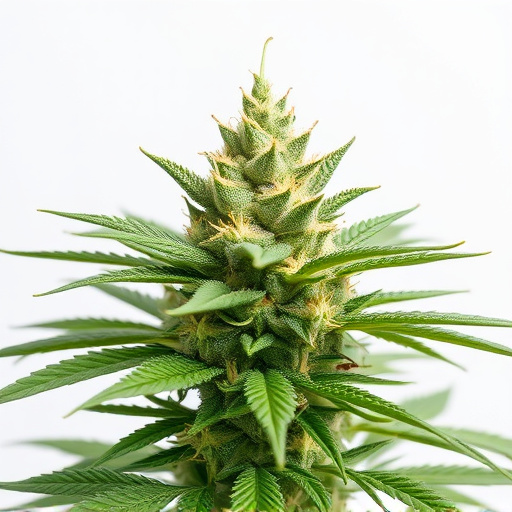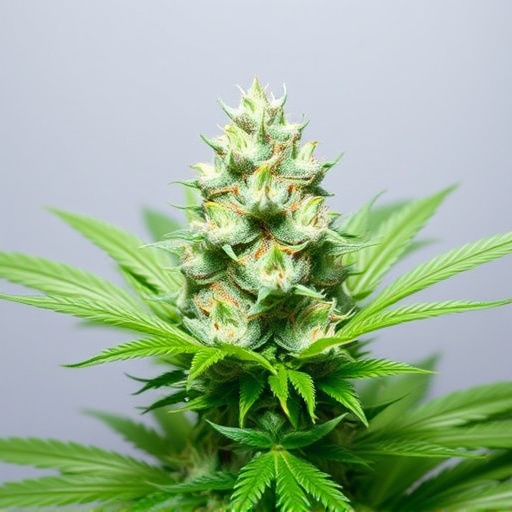The medical strains of cannabis offer therapeutic benefits for various conditions, with unique cannabinoid and terpene profiles interacting with the endocannabinoid system. Indica, Sativa, and Hybrids differ in effects: Indica calms anxiety, Sativa boosts energy, and Hybrids provide balance. Strains are cultivated for specific treatments like MS, epilepsy, chronic pain, and nausea. Choosing the right medical strains requires understanding symptoms, tolerance, and desired outcomes. Safety and effectiveness depend on consulting healthcare professionals to select the most suitable strain tailored to individual needs, ensuring optimal symptom management without adverse effects.
Discover the power of medical strains of cannabis and how they can provide relief for various conditions. This comprehensive guide explores the science behind different cannabis strains, their unique properties, and how to choose the right ones for specific medical needs. From managing pain and anxiety to addressing nausea and insomnia, understanding medical strains is essential for navigating the therapeutic potential of this ancient plant. Dive into these insights to unlock a natural approach to wellness.
- Understanding Medical Strains of Cannabis: A Comprehensive Overview
- Identifying the Right Strain for Specific Medical Conditions
- Safety and Effectiveness Considerations in Choosing Medical Cannabis Strains
Understanding Medical Strains of Cannabis: A Comprehensive Overview

Cannabis has gained significant attention for its therapeutic potential, leading to a vast array of medical strains designed to treat various conditions. Understanding these strains is crucial when navigating the complex world of medical cannabis. Each strain possesses unique characteristics determined by its specific cannabinoid and terpene profiles. Cannabinoids, like THC and CBD, interact with the body’s endocannabinoid system, influencing mood, memory, pain perception, and inflammation. Terpenes, aromatic compounds, not only contribute to the distinct scent and flavor but also offer potential therapeutic benefits, enhancing or altering the effects of cannabinoids.
The market offers a diverse range of medical strains, each catering to different medical needs. For instance, Indica strains are popular for their calming effects, making them suitable for managing anxiety and insomnia. Sativa strains, on the other hand, are known for boosting energy levels and stimulating creativity, often recommended for treating depression and fatigue. Hybrid strains combine traits from both Indica and Sativa, providing a balanced approach to symptom relief. Moreover, specific strains have been cultivated for particular conditions like multiple sclerosis, epilepsy, chronic pain, and nausea associated with chemotherapy. Understanding these variations is essential for patients to select the most appropriate medical strains to address their specific health concerns effectively.
Identifying the Right Strain for Specific Medical Conditions

When it comes to medical conditions, choosing the right strain of cannabis is akin to finding a personalized remedy. Different medical strains of cannabis offer varying levels and combinations of cannabinoids like THC (tetrahydrocannabinol) and CBD (cannabidiol), making them suitable for specific symptoms and ailments. For instance, high-CBD strains are often sought after for their potential anti-anxiety and seizure-reducing properties, while low-THC, high-CBD options might be preferred for conditions like arthritis or chronic pain due to their minimal psychoactive effects.
On the other hand, medical strains with higher THC content could be beneficial for conditions that respond well to its analgesic and appetite-stimulating qualities, such as severe nausea or insomnia. Identifying the right strain involves understanding one’s condition, tolerance, and desired effects. Medical professionals and experienced patients can guide individuals towards suitable options, ensuring they navigate the diverse landscape of medical strains of cannabis effectively.
Safety and Effectiveness Considerations in Choosing Medical Cannabis Strains

When selecting medical strains of cannabis, safety and effectiveness should be the top priorities. It’s crucial to understand that not all cannabis is created equal; each strain varies significantly in its chemical composition, primarily due to differences in terpenes and cannabinoids levels, including THC (tetrahydrocannabinol) and CBD (cannabidiol). The right strain for one condition may not work for another.
For instance, high-THC strains can be effective for treating nausea and appetite loss associated with chemotherapy, but they may also increase anxiety in some individuals. Conversely, CBD-rich strains are often preferred for managing pain, seizures, and inflammation without inducing psychoactive effects. It’s essential to consult healthcare professionals who have experience with medical cannabis to determine the best strain based on individual needs and preferences. This ensures a safer and more effective treatment approach.
When selecting the best medical strains of cannabis, it’s crucial to consider both specific condition relief and safety. By understanding the unique properties of each strain, patients can make informed choices guided by expert advice. Remember, what works for one condition may not be suitable for another, so individualized care is key. In navigating the evolving landscape of medical cannabis, staying informed and prioritizing safety will ensure patients receive the most effective treatment options available.














